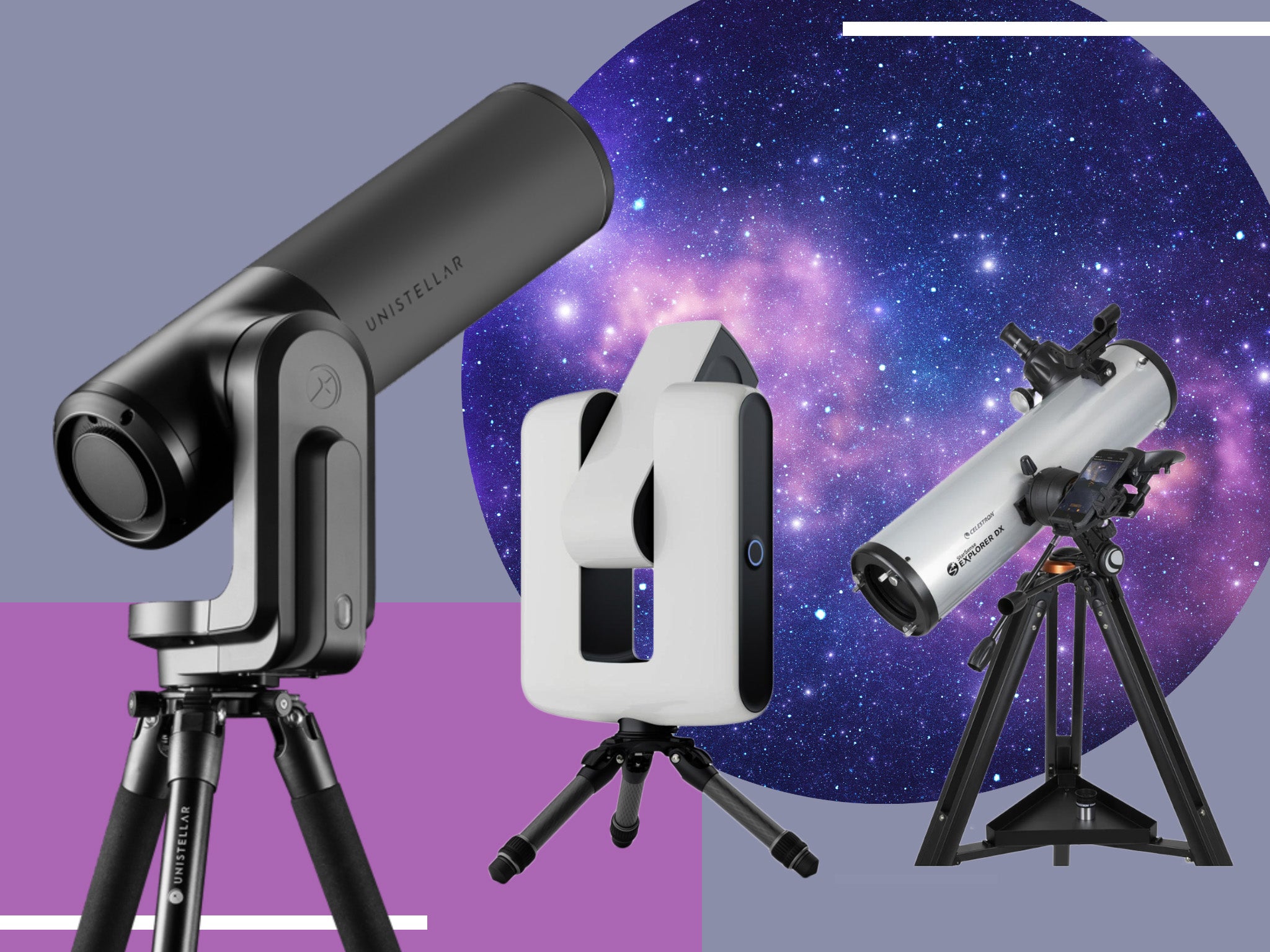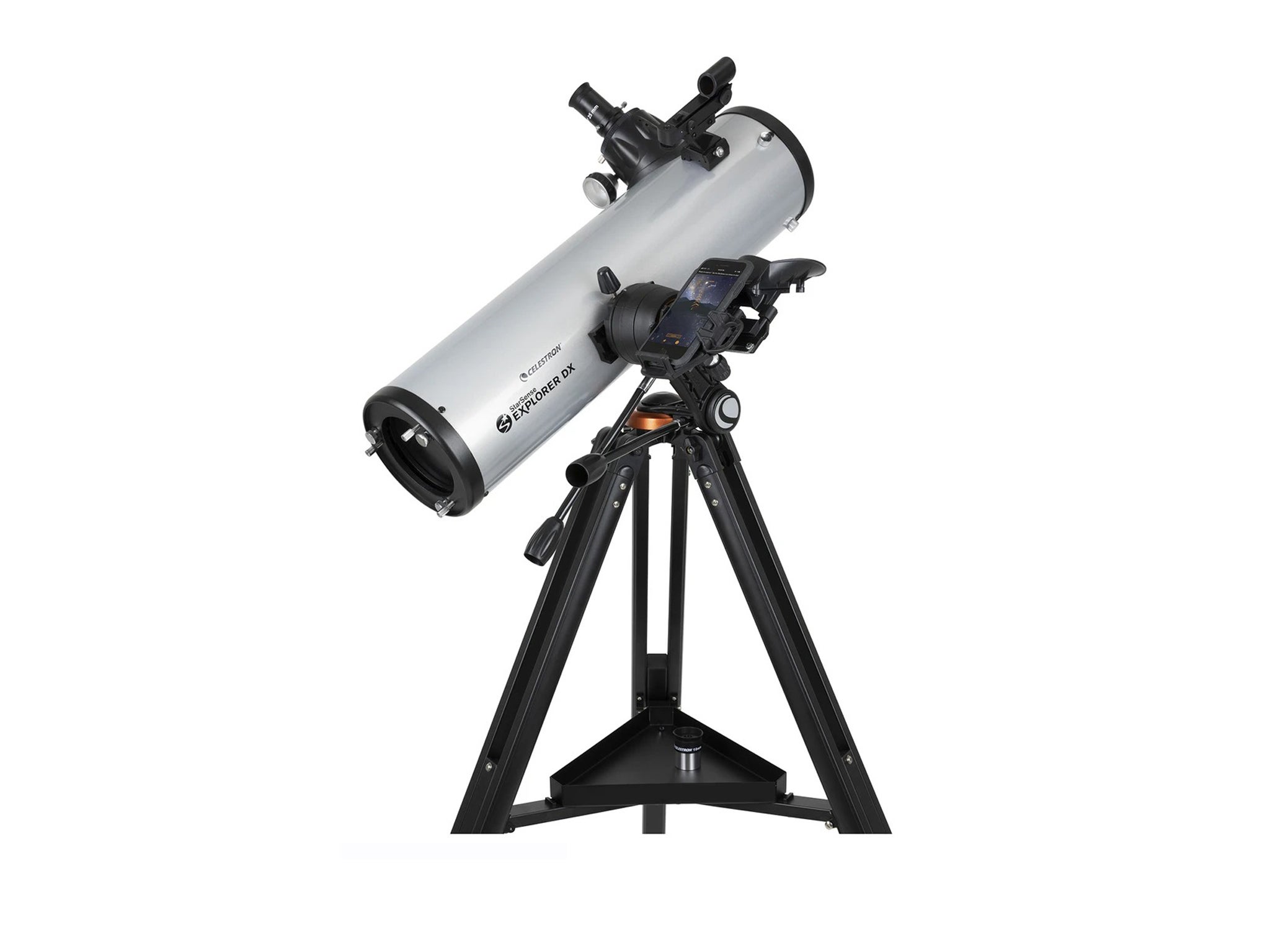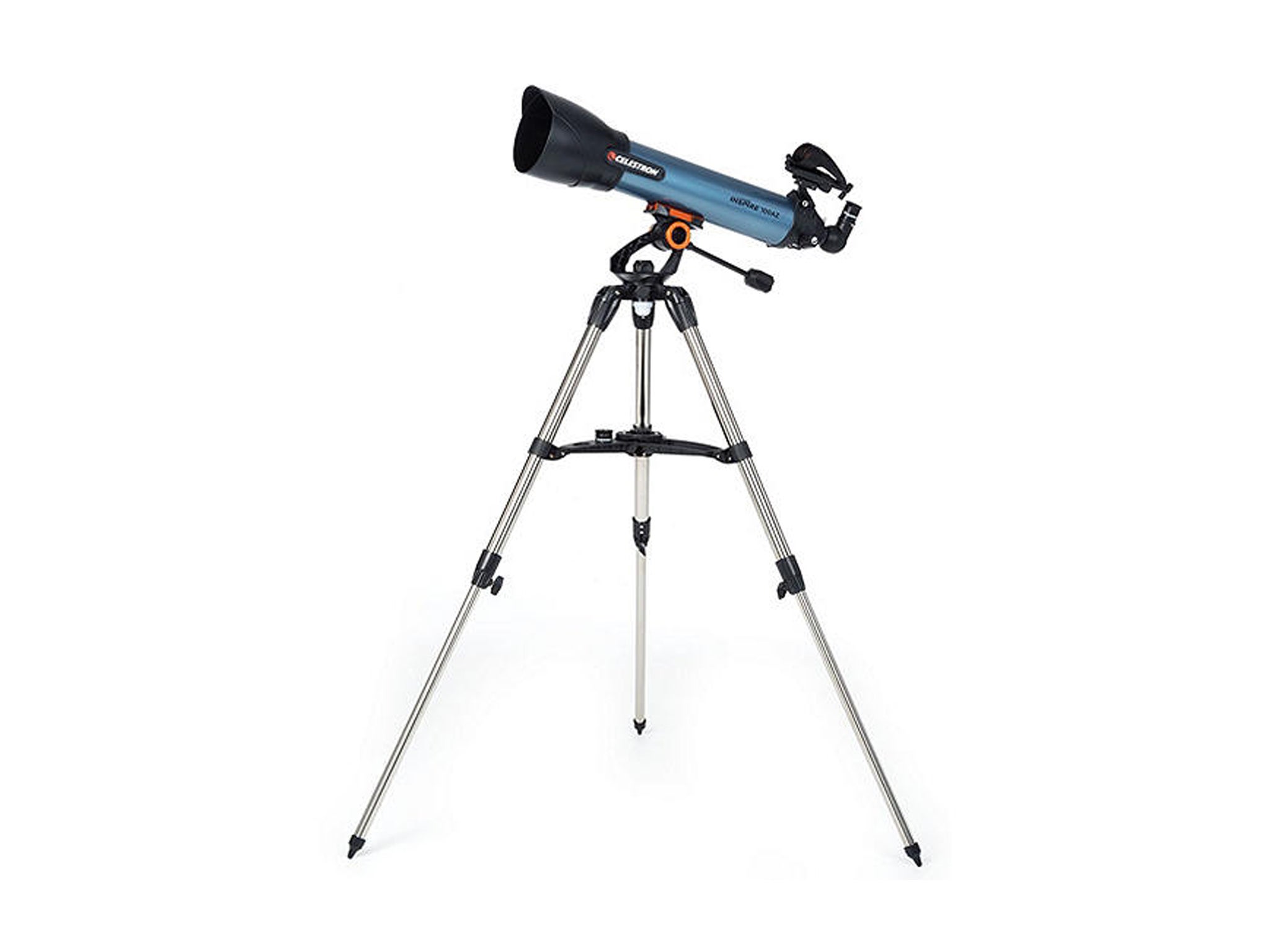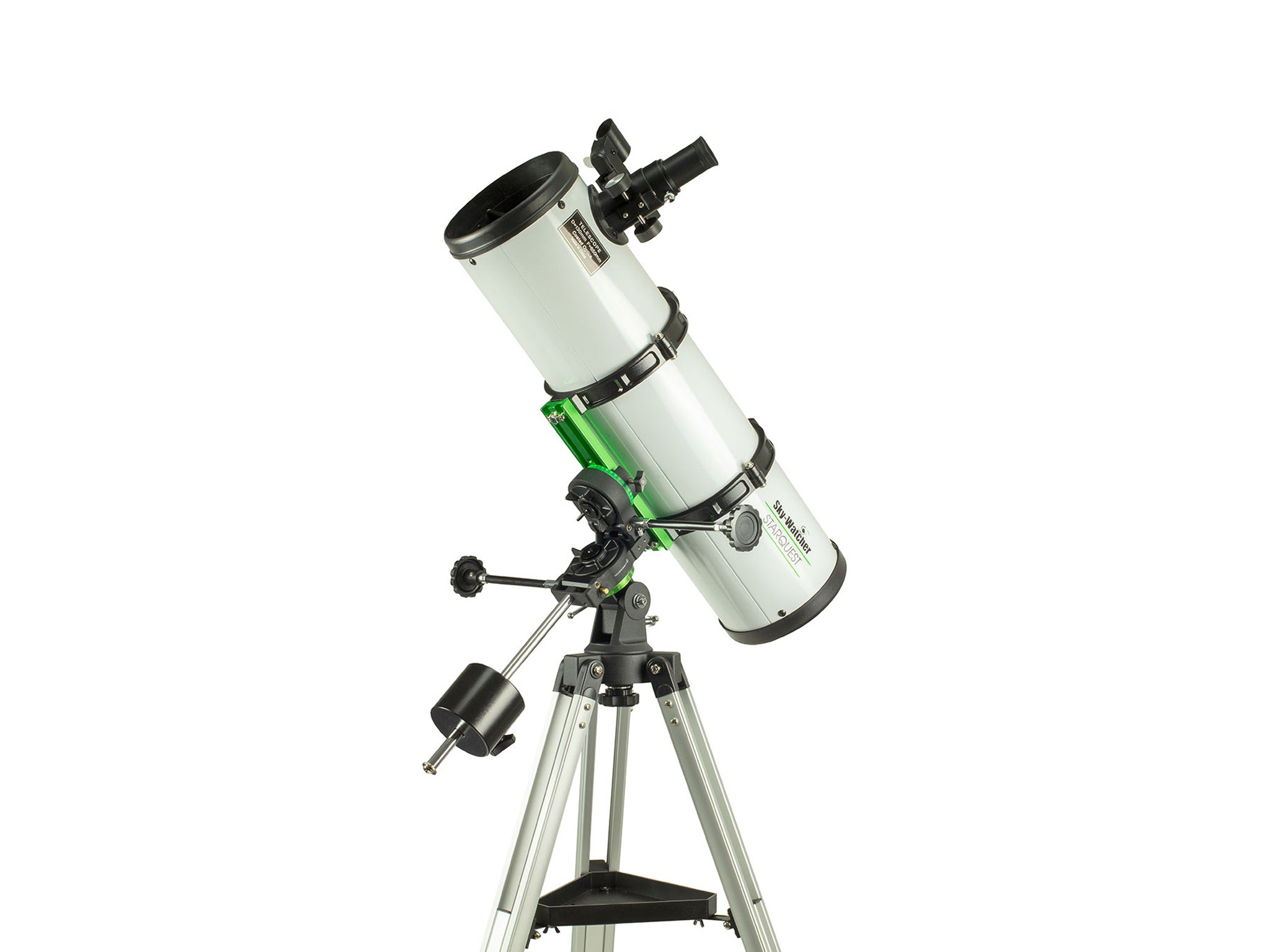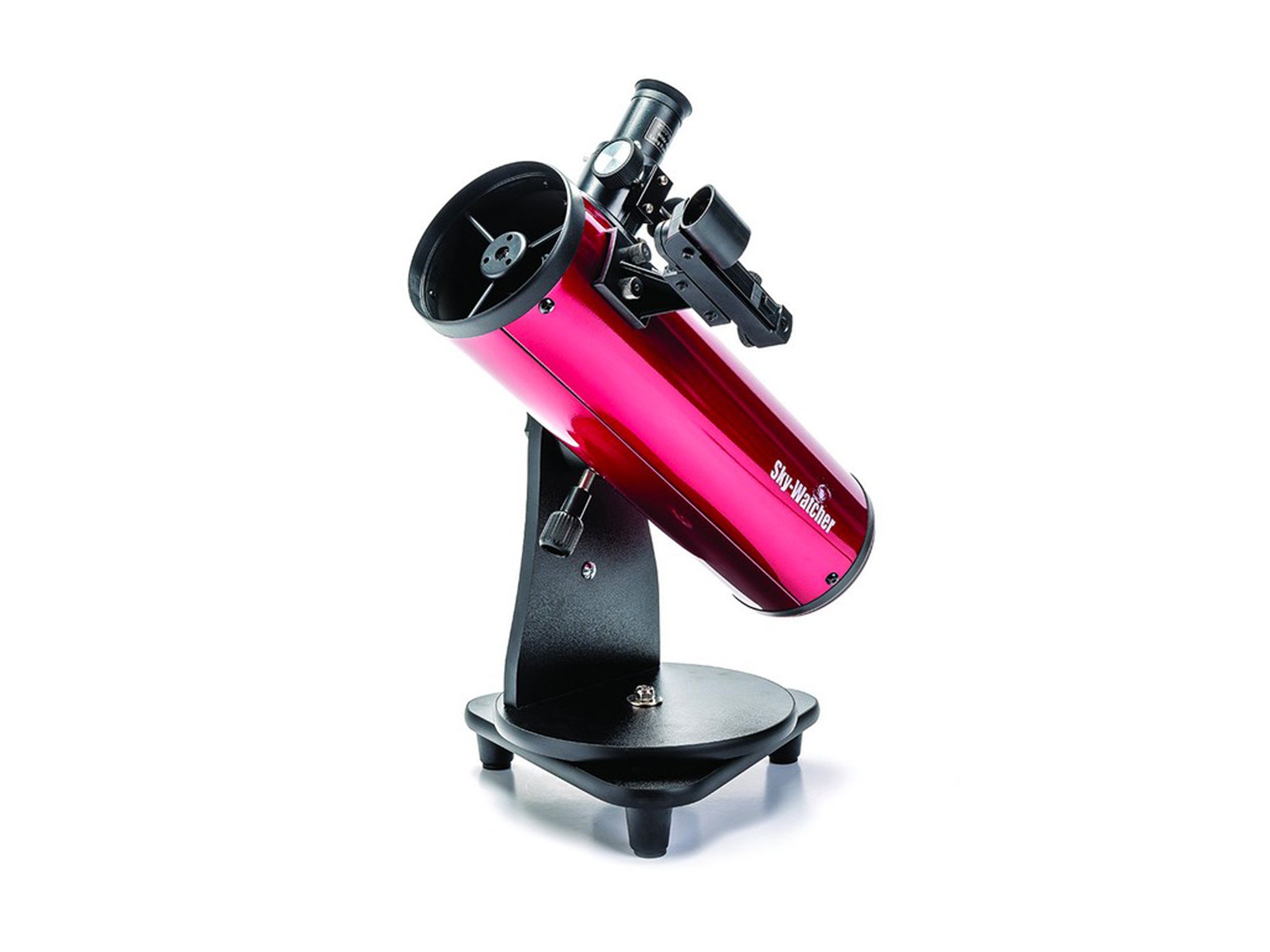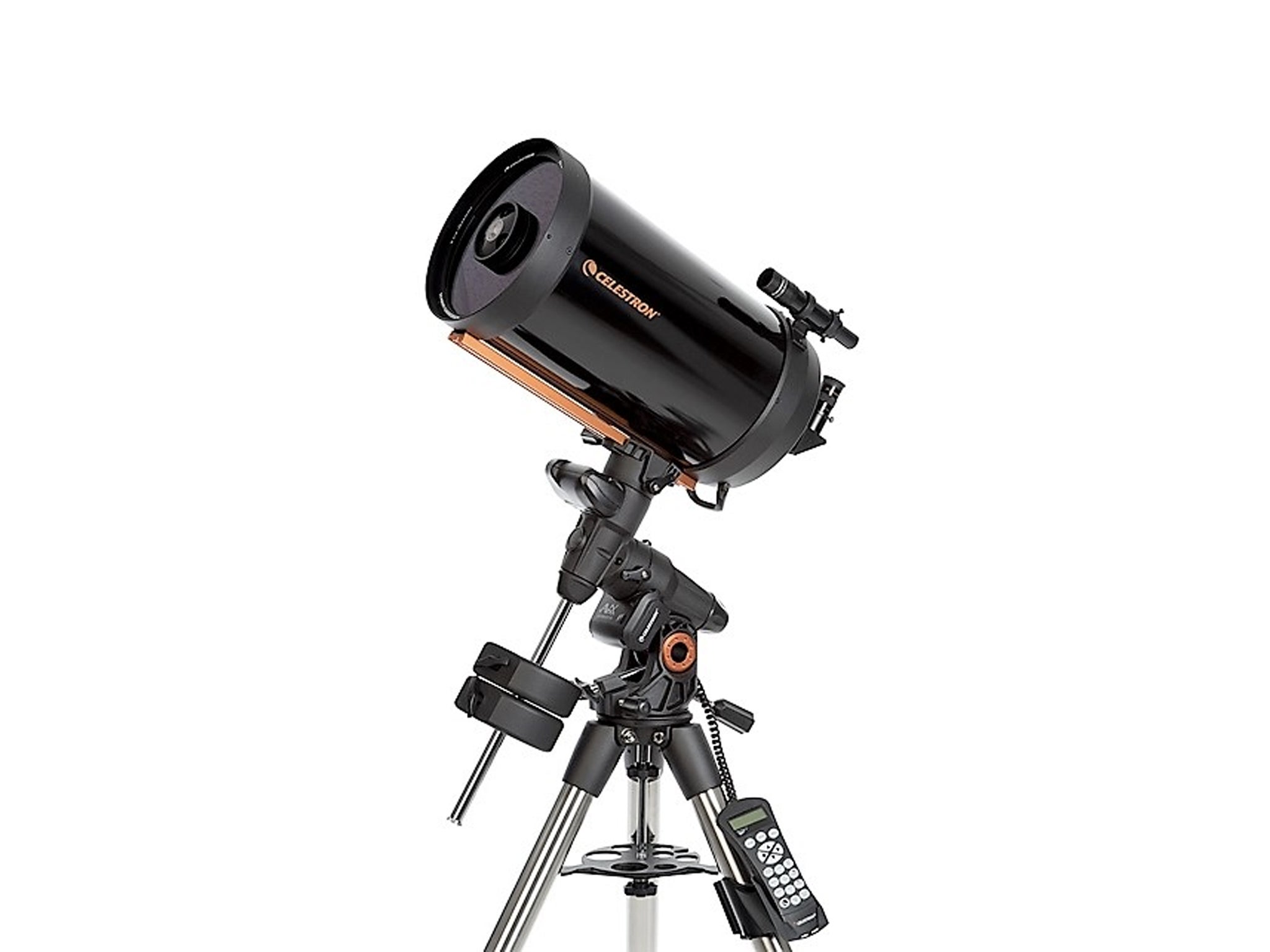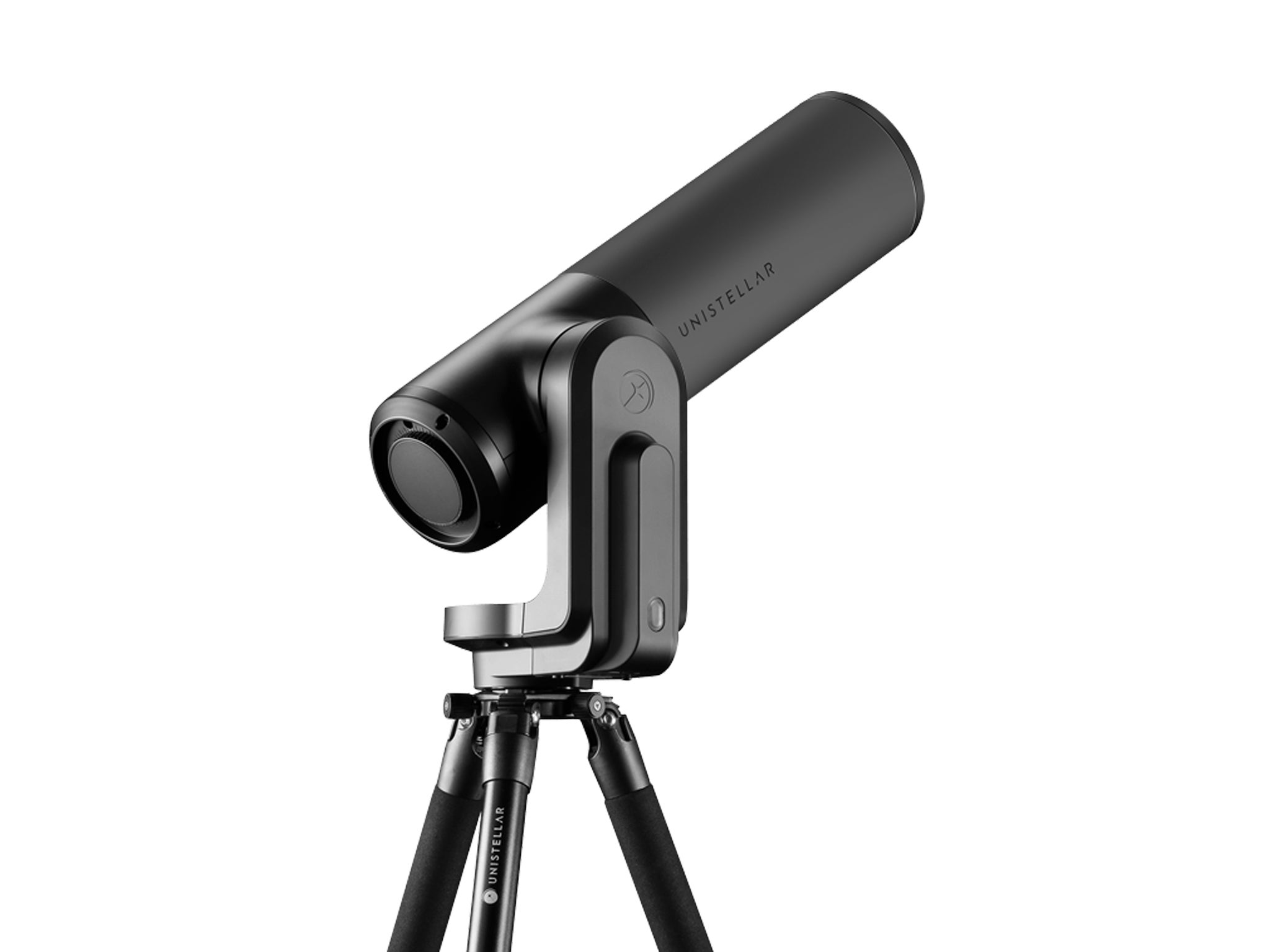Vaonis Stellina
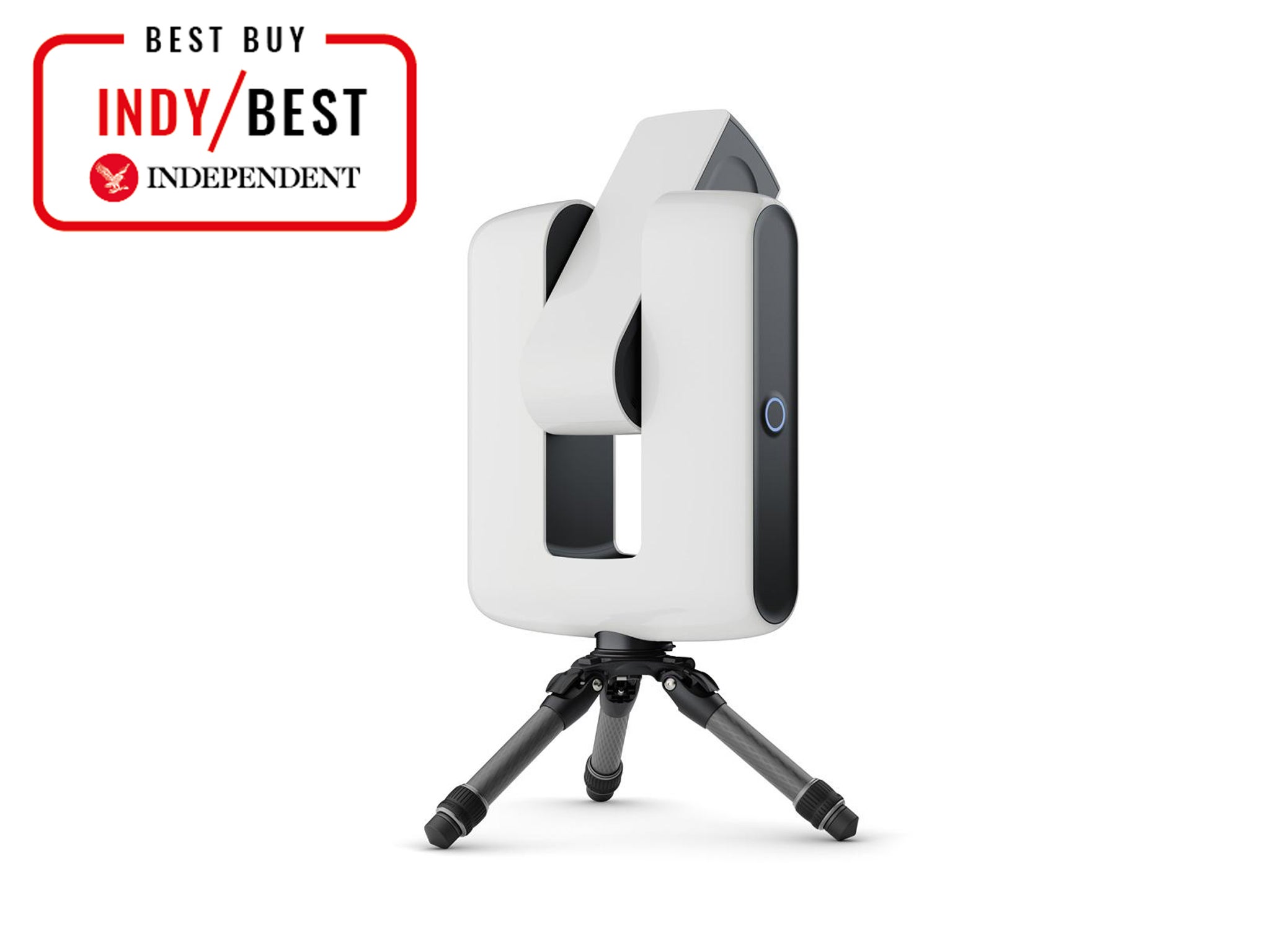
Best: For effortless astronomy
With this scope, all you have to do is choose what you want to look at via the app and watch the image build on your phone’s screen, which is both exciting and rewarding.
Obviously, the first thing that you’ll notice about the Stellina is that it’s no ordinary telescope and actually looks like it wouldn’t be out of place on the set of a sci-fi movie. At the touch of a button, the modernist black and white housing beautifully reveals the refractor telescope.
It also allows you to share the discoveries and experience with a multi-user mode that allows up to 10 mobile devices to connect to the scope. Through the app, you’ll be able to zero in on over 100 deep-sky targets, as well as get a good look at the lunar surface.
The Stellina is fully computerised to take the headache and guesswork out of astronomy and with a quick pairing to your smartphone, you’ll be up and running in minutes. Using the phone’s GPS signal to geolocate, all the pointing and tracking is completely automated, as is the focus, giving the most user-friendly experience of all the scopes on test.
